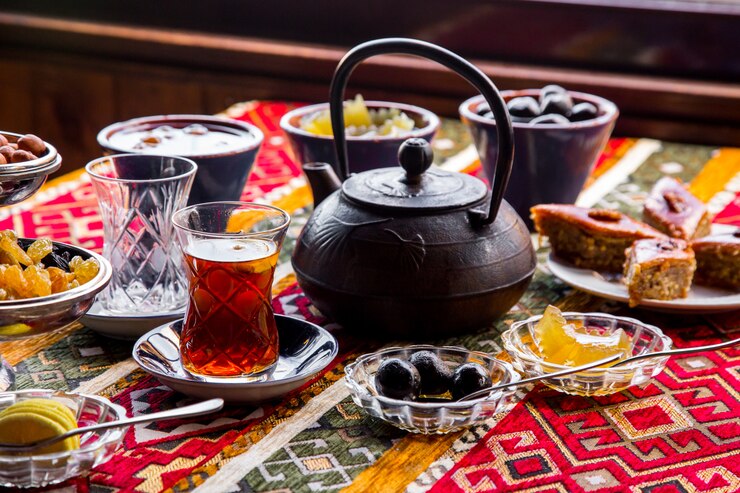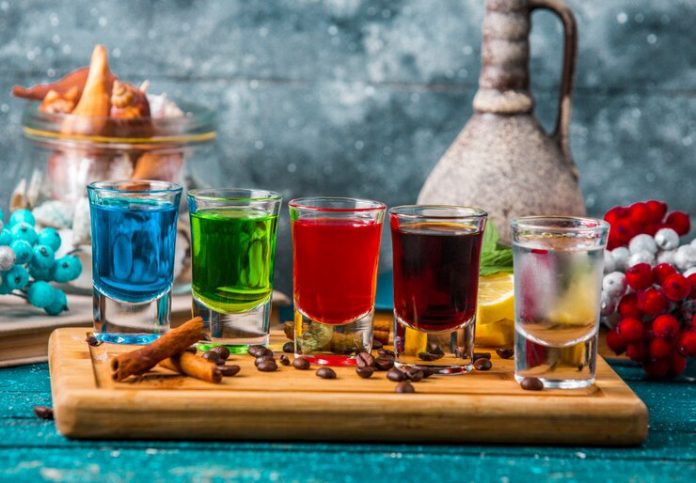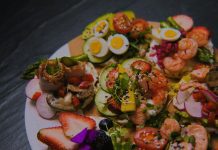Have you ever stopped to think about the story behind your favorite drink? Whether it’s a steaming cup of coffee, a refreshing glass of lemonade, or a frothy mug of hot chocolate, each beverage holds a rich history, reflecting the culture, traditions, and ingenuity of different societies around the world.
This blog post invites you on a delicious adventure, exploring the fascinating world of traditional food and beverages. So, grab your imaginary passport and get ready to experience the magic of food and beverages as windows into the past!
A Toast to Tradition: Understanding the Significance of Cultural Beverages
Traditional beverages are more than just thirst quenchers; they’re woven into the fabric of cultures, serving various purposes:
- Social Gatherings: Drinks are often central to social events, fostering connections and celebrations. Sharing a cup of tea in China or passing around gourd vessels filled with mates in South America are rituals that strengthen social bonds.
- Religious Ceremonies: Many cultures use specific beverages in religious practices. Wine plays a significant role in Christian traditions, while sake is spiritually important in Shinto rituals in Japan.
- Medicinal Purposes: Traditional beverages are often used for their health benefits. Herbal teas have been used for centuries to soothe ailments and promote well-being in various cultures.
- Cultural Identity: Traditional drinks can be a source of national pride and a symbol of cultural heritage. Think of Turkish coffee, a strong and flavorful brew deeply ingrained in Turkish customs.
A World of Flavors: Exploring Traditional Beverages Around the Globe
As we embark on our global beverage adventure, let’s explore some fascinating examples:
- Tea (China): Tea has a history dating back thousands of years, and in China, it is more than just a drink. It’s a ritual steeped in tradition involving specific brewing methods and teaware. Green, black, and oolong teas offer diverse flavors and health benefits.
- Coffee (Ethiopia): Coffee is believed to have originated in Ethiopia, where it was first consumed for its energizing properties. Today, Ethiopian coffee ceremonies are elaborate social events involving roasting coffee beans over an open flame and pouring the brewed coffee into small cups for guests.
- Mate (South America): Mate is an herbal infusion made from the leaves of the yerba mate plant. It is traditionally enjoyed in countries like Argentina, Uruguay, and Paraguay. People share mates from a gourd using a metal straw, creating a strong sense of community.
- Sake (Japan): Sake is a fermented rice beverage that is a cornerstone of Japanese culture. It’s served in special ceremonies and enjoyed with meals. The brewing process is intricate, and different sake varieties offer a range of flavors and textures.
- Lassi (India): Lassi is a yogurt-based drink popular in India. It comes in various flavors, from sweet and fruity to savory and salty. Lassi is a refreshing beverage, often enjoyed as a coolant during hot weather.
- Kava (Pacific Islands): Kava is a beverage made from the pulverized root of the kava plant, traditionally consumed in Polynesian cultures for its calming and relaxing properties. Kava ceremonies are significant social events in these communities.

The Evolution of Beverages: How Food and Drinks Change Over Time
Traditional beverages are not static; they evolve alongside cultures and societies. Here are some factors that can influence the change:
- Trade and Exploration: Introducing new ingredients and spices through trade routes has significantly impacted beverages. Coffee beans traveled from Africa to the Middle East and eventually reached Europe, forever changing coffee culture worldwide.
- Technological Advancements: New technologies have revolutionized beverage production and consumption. Refrigeration allowed for the wider distribution of perishable ingredients like milk, leading to the rise of new drinks like milkshakes.
- Social and Economic Changes: As societies change, so do their beverage preferences. The rise of fast food culture has increased the consumption of sugary drinks, while health-conscious consumers are driving the demand for natural and organic beverages.
Case Study: The Transformation of Tea Culture in Britain
Britain’s love affair with tea is a fascinating example of how a traditional beverage can evolve. Tea was first introduced to Britain in the 17th century and quickly became a symbol of social status.
Afternoon tea, a light meal centered around tea consumption, became a popular social gathering for the wealthy. Today, tea remains a beloved beverage in Britain, but tea culture has become more casual and inclusive.
People from all walks of life enjoy tea throughout the day, and a wider variety of tea types and brewing methods are now available.
The Future of Food and Beverages: Innovation Meets Tradition
While tradition is essential, the world of food and beverages is constantly innovating. Here are some exciting trends to watch:
- Fusion Flavors: Traditional beverages are getting a modern twist with the fusion of flavors from different cultures. Think of a Japanese matcha latte with a hint of lavender or a Mexican hot chocolate spiced with cinnamon and chili.
- Sustainability in Focus: Consumers are increasingly concerned about the environmental impact of their food and beverage choices. The beverage industry should adopt sustainable practices like using locally sourced ingredients, eco-friendly packaging, and fair trade practices.
- Personalized Beverages: Technology is paving the way for personalized beverage experiences. Imagine coffee machines that adjust brewing settings to your taste preferences or subscription boxes delivering customized tea blends based on your health goals.
Beyond Drinks: Food and Beverages as Cultural Ambassadors
Food and beverages are powerful tools for cultural exchange. Here’s how:
- Travel and Tourism: Trying local drinks is essential to the travel experience. It allows you to connect with the culture, understand local flavors, and create lasting memories.
- Immigrant Communities: Immigrant communities often bring traditional beverages to their new homes, enriching the local food scene and fostering cultural understanding. Think of the growing popularity of bubble tea, a Taiwanese beverage, worldwide.
- Celebrating Diversity: Food and beverage festivals are a fantastic way to celebrate cultural diversity. These events allow people to explore different flavors, traditions, and customs, promoting tolerance and appreciation for different cultures.
Wrap Up
In this delicious journey, we’ve explored traditional beverages’ rich history and cultural significance. From tea ceremonies in China to kava rituals in the Pacific Islands, these drinks offer more than just refreshments; they connect us to the past, foster social connections, and even shape cultural identity. As the world continues to evolve, traditional beverages will undoubtedly continue to adapt and change, offering us new and exciting ways to experience the world through our taste buds.























